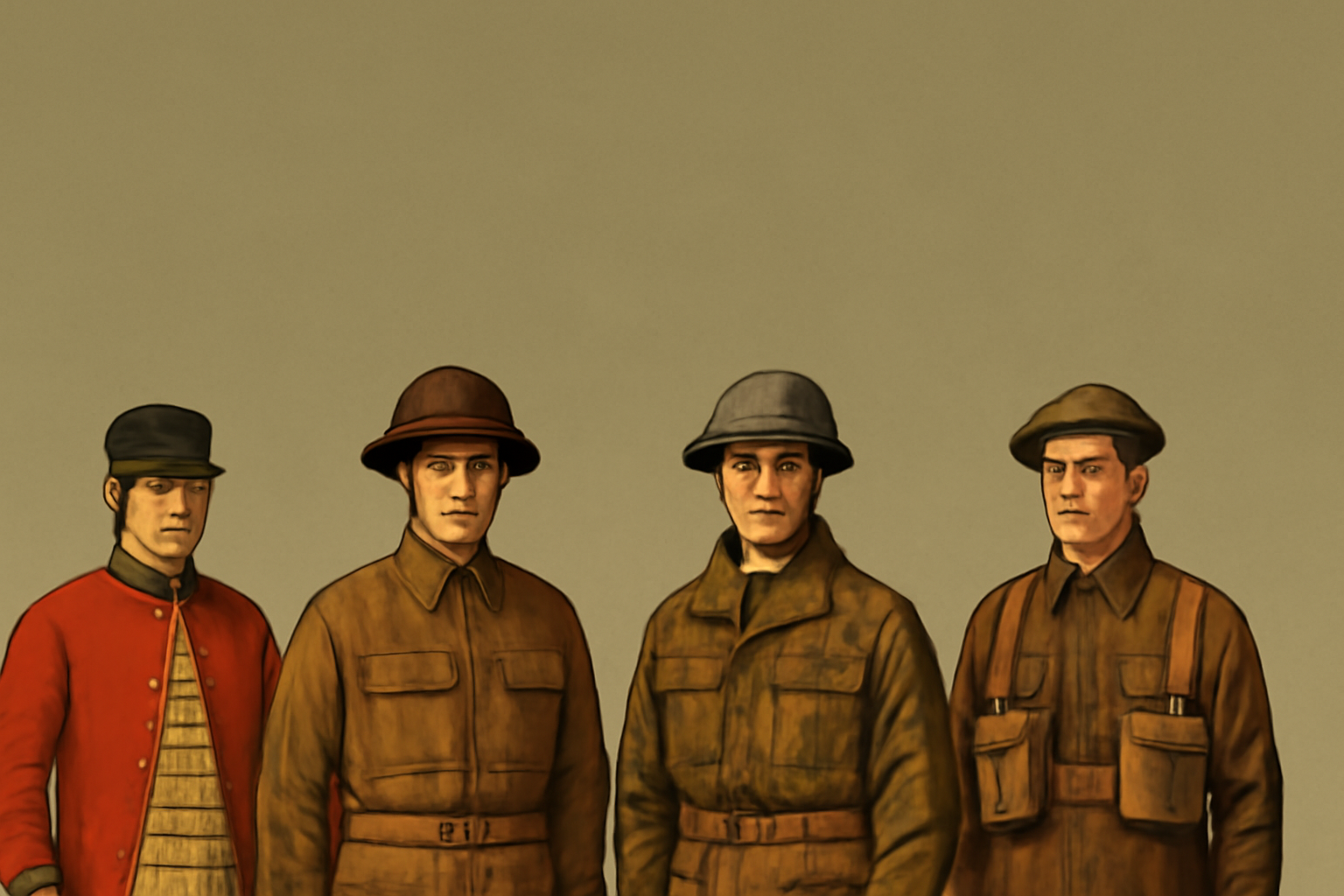
WWII British Uniform Types: Complete Guide to British Soldier Uniforms & Royal Army Jackets
Published on May 27, 2025
WWII British Uniform Types: A Complete Guide to British Soldier Uniforms & Royal Army Jackets
When discussing the British military’s role in World War II, one of the most fascinating aspects is the iconic uniforms worn by British soldiers. These uniforms not only served functional purposes but also became symbols of bravery, endurance, and tradition. Understanding the different WWII British uniform types provides insight into the soldiers’ daily lives, their battles, and the evolution of military apparel from earlier periods, including the Napoleonic era.
In this article, we’ll cover the major types of British uniforms during WWII, focusing on the practical design of the Royal Army Jacket, the specialized D-Day uniform, and the historical background of British military clothing.
Overview of WWII British Uniform
The British Army’s uniforms in World War II were designed to be practical, durable, and suitable for various climates and combat situations. Unlike flashy ceremonial attire, WWII uniforms focused on camouflage, protection, and functionality. The most common uniform set worn by British soldiers included wool serge tunics, battledress trousers, and sturdy boots, combined with webbing gear to carry essentials.
Key Features:
- Earth-tone colors like khaki and olive drab for effective camouflage
- Durable wool and cotton fabrics suited for various weather conditions
- Standard issue battledress introduced to replace older tunic designs
The Royal Army Jacket: The Backbone of the British Soldier's Attire
One of the most recognizable elements of WWII British uniforms is the Royal Army Jacket. Also known as the "Battledress blouse," this jacket was introduced in the late 1930s and quickly became the staple garment for British soldiers during the war.
Design and Functionality:
- Made from heavy wool serge fabric for durability and warmth
- Features a short waist-length cut allowing better mobility and ease of movement
- Equipped with large patch pockets for carrying small items and equipment
- Button-up front with reinforced stitching to withstand rough combat conditions
- Distinctive olive drab or khaki colors suited to different theaters of war
The Royal Army Jacket was designed not only for utility but also to symbolize unity among troops. It was commonly paired with matching trousers and the famous Brodie helmet, creating the classic image of the WWII British soldier.
D-Day Uniform: Specialized Gear for the Normandy Landings
The D-Day uniform is perhaps one of the most famous British military uniforms from WWII due to the scale and importance of the Normandy invasion in June 1944.
Characteristics of the D-Day Uniform:
- Modified battledress with reinforced knees and elbows to withstand the rough beach landings
- Additional camouflage netting or smocks worn to blend into the varied terrain of Normandy
- Lightweight webbing and gear configured for maximum efficiency in the amphibious assault
- Boots with better grip for wet, slippery conditions on the beaches
- Sometimes included additional waterproofing measures due to the amphibious nature of the mission
British soldiers' D-Day uniforms reflected the demands of a highly coordinated and dangerous operation, emphasizing both protection and agility.
Evolution from Earlier Uniforms: Napoleonic British Uniforms and Their Legacy
While WWII uniforms were modern and pragmatic, their roots trace back to earlier British military attire, including Napoleonic British uniforms. These earlier uniforms were more ceremonial and decorative, designed to inspire morale and intimidate opponents with bright colors, heavy embellishments, and distinctive regalia.
Comparison Highlights:
- Napoleonic uniforms featured red coats, ornate brass buttons, and tall shakos (hats)
- WWII uniforms moved toward muted colors and minimal ornamentation for practical combat purposes
- Both styles, however, maintained a sense of regimental pride and tradition in their tailoring and insignia
Understanding these historical connections helps appreciate how British military uniforms evolved from symbolic and ceremonial pieces to functional, tactical clothing during WWII.
Why British Uniforms Matter Today
The WWII British uniform types — from the Royal Army Jacket to the D-Day uniform — remain important cultural artifacts and sources of inspiration for historians, reenactors, and collectors. They represent more than just clothing; they are a testament to the resilience and sacrifice of British soldiers who fought in one of history’s most significant conflicts.
Collectors seek original Royal Army Jackets for their historical value and craftsmanship, while reenactors rely on accurate D-Day uniform replicas to honor the memory of those who served.
Conclusion
The WWII British uniform types, including the iconic Royal Army Jacket and the specialized D-Day uniform, offer a window into the lives of British soldiers during World War II. These uniforms balance practical needs with symbolic importance, reflecting the evolving demands of warfare and the rich military heritage of Britain.
Whether you’re fascinated by the tactical design or the historical lineage stretching back to Napoleonic times, the story of British military uniforms is a compelling one that continues to capture imaginations worldwide.
For more detailed insights on British military attire and related topics, explore our pillar pages on WWII British Uniform and WW2 British Soldier Uniform as well as subpages like Napoleonic British Uniforms, Royal Army Jacket, and D-Day Uniform.
